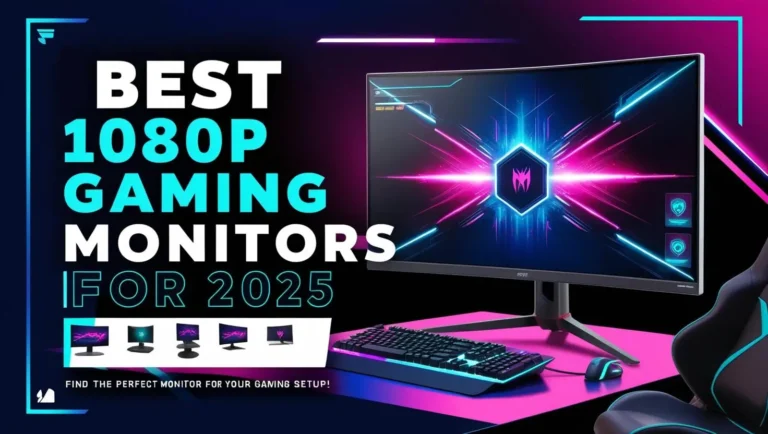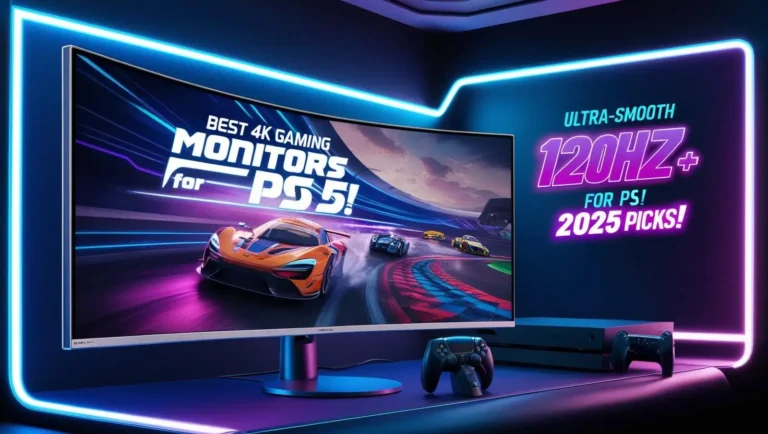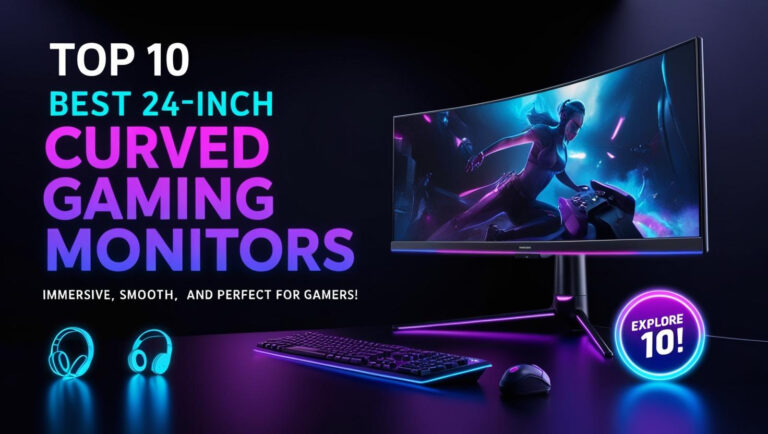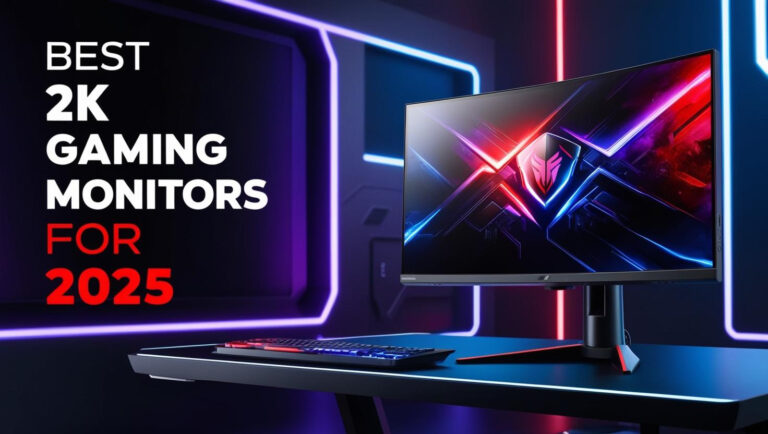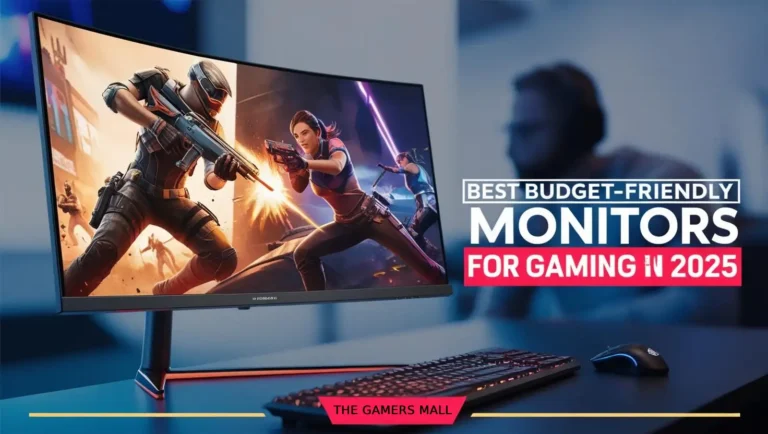Curved vs. Flat Monitors: Which is Better for Gaming?
Whether you are a casual gamer, dedicated streamer, or a professional esports player, choosing the right monitor can make or break your gaming experience. Among various monitor options, the debate between curved vs flat monitors has been a hot topic in the gaming community.
Curved monitors promise an unparalleled immersive viewing experience, while flat monitors stand strong with their simplicity and versatility. But which one truly enhances your gameplay experience? This blog will compare curved and flat monitors across various aspects like visual experience, eye strain, game environment, and more. By the end, you’ll have the insights you need to make an informed decision before your next monitor purchase.
JUMP LIST
- Why the Curved vs. Flat Monitor Debate Matters
- What is a Curved Monitor?
- What is a Flat Monitor?
- The Benefits of Curved Monitors for Gaming
- The Drawbacks of Curved Monitors
- The Benefits of Flat Monitors for Gaming
- The Drawbacks of Flat Monitors
- How to Choose the Right Monitor for You
- Our Recommendations
- The Monitor Choice is Yours
- FAQs about Curved vs Flat Monitor
Why the Curved vs. Flat Monitor Debate Matters
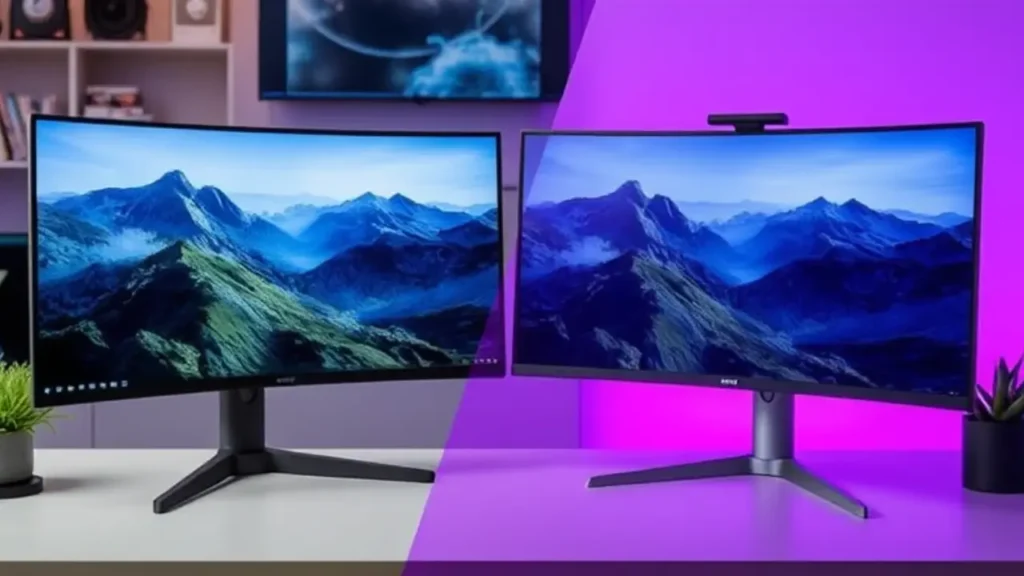
Monitors have evolved dramatically over the past decade. From larger monitors with higher resolutions to cutting-edge monitor technologies, the market offers endless choices. However, the type of monitor—curved or flat—directly affects your field of vision, visual comfort, and even desk space.
Gamers, in particular, rely on monitor lines that provide clarity and responsiveness. Whether you’re racing through a game environment, chasing that tiny pixel of your enemy, or editing video for your next streaming session, ensuring your display matches your needs is essential.
But how exactly do curved monitors compare to their flat counterparts? Let’s dig in.
What is a Curved Monitor?
Curved monitors feature a concave curved screen design, mimicking the natural curvature of the human eye. This enhances the field of vision and offers an immersive gaming experience by wrapping the action closer to your peripheral vision.
Key specs often include curvature measurements like 1000R, 1800R, and 3000R, where “R” refers to the radius of curvature—a lower number means a steeper curve. For gamers, ultrawide monitors with slight or deeper curvature levels are increasingly popular due to the greater sense of immersion they provide.
What is a Flat Monitor?
Flat monitors, as the name suggests, have no curve. These traditional displays maintain straight lines, offering consistent viewing experiences from edge to edge. Since there’s no curvature, flat screen monitors often avoid potential issues like curved-screen distortion or inconsistent viewing experiences.
The Benefits of Curved Monitors for Gaming
- Immersive Visual Experience: Curved monitors excel at creating an extraordinary viewing experience by enveloping your vision. This is particularly beneficial in games with vivid environments or wide fields, like open-world RPGs or racing games.
- For example, a 34-inch curved monitor can simulate a wider field of vision, drawing players into the game world more completely than its flat counterpart.
- Reduced Eye Strain: Since curved monitors mimic the natural shape of the eye, they offer a more comfortable viewing experience over extended periods. This can minimize eye strain, especially for gamers who spend hours on a single session.
- Enhanced Peripheral Vision: Curved designs ensure that the entire monitor surface aligns better with your line of sight, improving awareness in competitive games that require tracking fast movements across the entire field.
- Deeper Immersion: The wraparound effect allows for a more engaging experience, amplifying the level of immersion. Titles with expansive environments benefit the most from curved monitors, especially when coupled with ultrawide displays in a cockpit setup for racing or flying simulators.
The Drawbacks of Curved Monitors
While curved monitors have distinct advantages, they are not without downsides.
- Distortion Issues: Curved-screen distortion can occur when viewing at sharp angles. For tasks like photo editing or working with straight lines, this can create slight inaccuracies.
- Cost and Space: Curved displays often come with higher price tags and require more desk space due to their form factor. Additionally, compatibility with a multi-monitor setup can sometimes result in awkward gaps.
The Benefits of Flat Monitors for Gaming
- Versatility Across Tasks: Flat monitors are particularly effective for dozens of windows and tasks requiring symmetry, like video editing or graphic design, where distortion-free monitor lines are essential.
- Budget-Friendly Options: Flat monitors typically have more mid-tier models compared to curved ones. This makes them accessible for gamers who need a solid display without breaking the bank.
- Accuracy and Precision: With lines without distortion, flat monitors are an excellent choice for pinpoint accuracy in titles like FPS shooters or RTS games.
The Drawbacks of Flat Monitors
- Limited Immersion: While flat monitors offer a clean and timeless design, they don’t match the immersive field that a curved screen provides. Gamers accustomed to wide-field gameplay may find flat monitors less engaging and immersive in certain scenarios.
- Eye Strain Over Time: While flat monitors don’t inherently cause eye strain, they lack the curved screen’s ergonomic advantage of aligning with eye distance, particularly on larger monitors or when viewing for extended gaming marathons.
How to Choose the Right Monitor for You
When selecting between curved and flat-screen monitors, consider these factors to make a well-informed decision:
Primary Use Case
- Gaming & Immersive Viewing: Opt for curved-designed monitors with a gentler curve for more engagement.
- Content Creation or Competitive FPS Gaming: A 27-inch flat monitor or 27–28 inch 4k resolution flat display monitor offers precision and focus.
Monitor Size and Resolution
- 21–27 Inches: Best for compact setups or desks with limited space.
- 34-inch Curved Monitors or Ultrawide Displays: Ideal for deeper immersion, covering more of your peripheral vision.
Budget
For those on a tighter budget, there are innovative mid-tier monitor choices that use flat displays with advanced technologies. Curved monitors are often more costly but worth it for their distinct viewing experience.
Desk Space
Consider your desk space before purchasing a larger monitor. For a multi-monitor setup, flat monitors might be easier to position than curved ones.
Our Recommendations
Here are some stand-out choices based on use cases and price ranges:
Best Value – ASUS TUF Gaming 27
A fantastic budget-friendly option, the ASUS TUF Gaming VG27AQ is ideal for gamers and professionals seeking a balance between clarity and immersion.
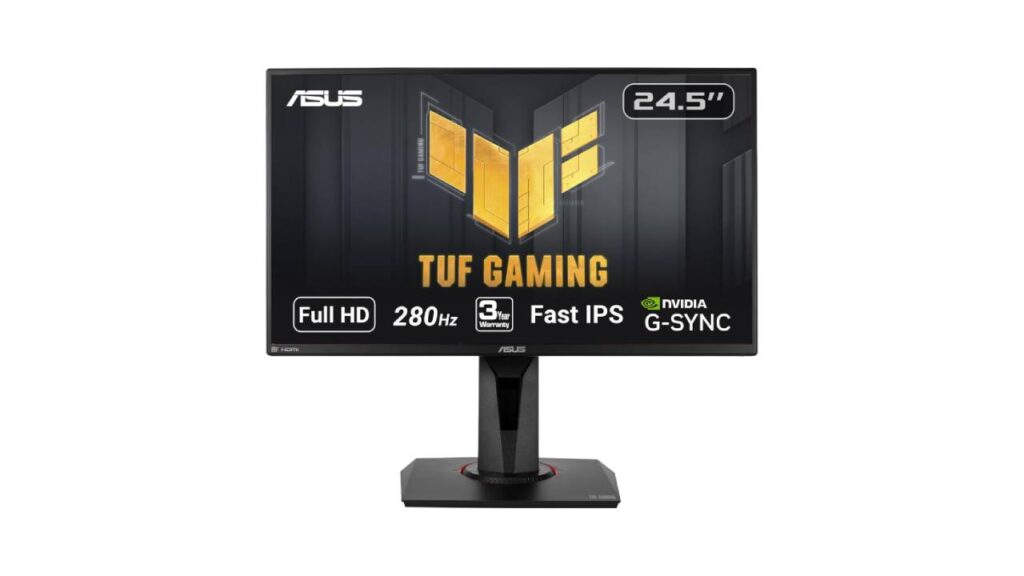
Price and Best Deals
Key Features
- 27-inch WQHD (2560 x 1440) IPS panel.
- 165Hz refresh rate (supports 144Hz) for smooth gameplay.
- 1ms response time for reduced motion blur.
- Adaptive-Sync and G-Sync compatibility to eliminate screen tearing.
- Ergonomic stand with tilt, swivel, pivot, and height adjustment for comfortable usage.
Best For: Gamers and professionals on a budget who need excellent visuals without breaking the bank.
Looking for more options? Check out our article: Best 27-Inch Curved Gaming Monitors.
Ultra-Immersive Option: LG UltraGear 34GP950G-B (34-Inch Curved Monitor)
The LG UltraGear 34GP950G-B takes immersion to a whole new level with its ultra-wide curved design, making it an exceptional choice for gamers who crave a panoramic gameplay experience.
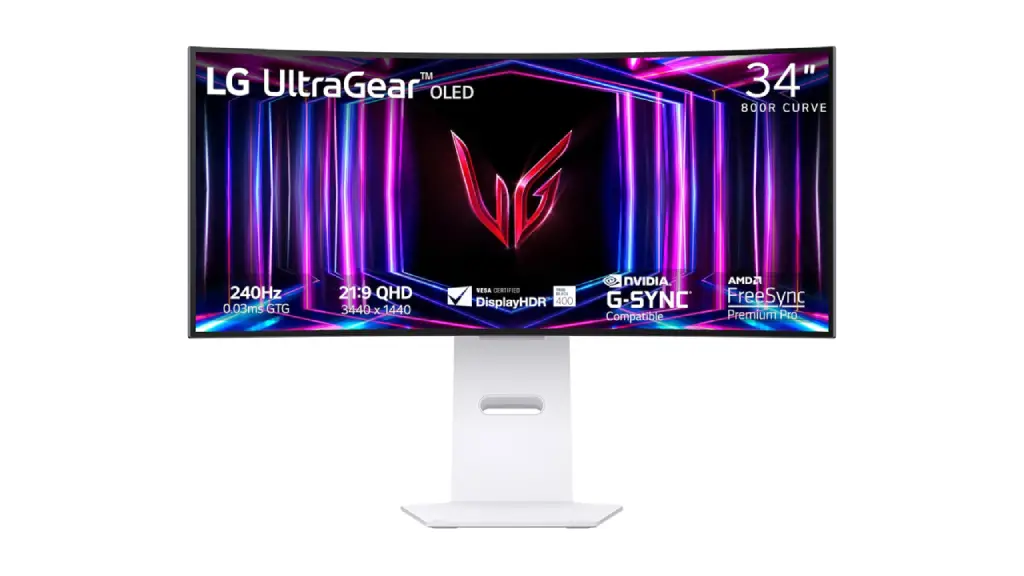
Price and Best Deals
Key Features
- 34-inch Nano IPS panel with WQHD resolution (3440 x 1440).
- 1800R curvature for immersive visuals without distortion.
- 144Hz refresh rate (overclockable to 180Hz) for fluid gameplay.
- NVIDIA G-Sync Ultimate support for seamless performance.
- VESA DisplayHDR 600 for vivid colors and sharp contrasts.
Best For: Gamers who want an immersive, cinematic experience with top-tier performance.
Best for Content Creators: Dell UltraSharp U2723QE (27-Inch Flat Monitor)
The Dell UltraSharp U2723QE is a dream monitor for content creators, delivering unmatched clarity, color accuracy, and a wide color gamut for creative work.
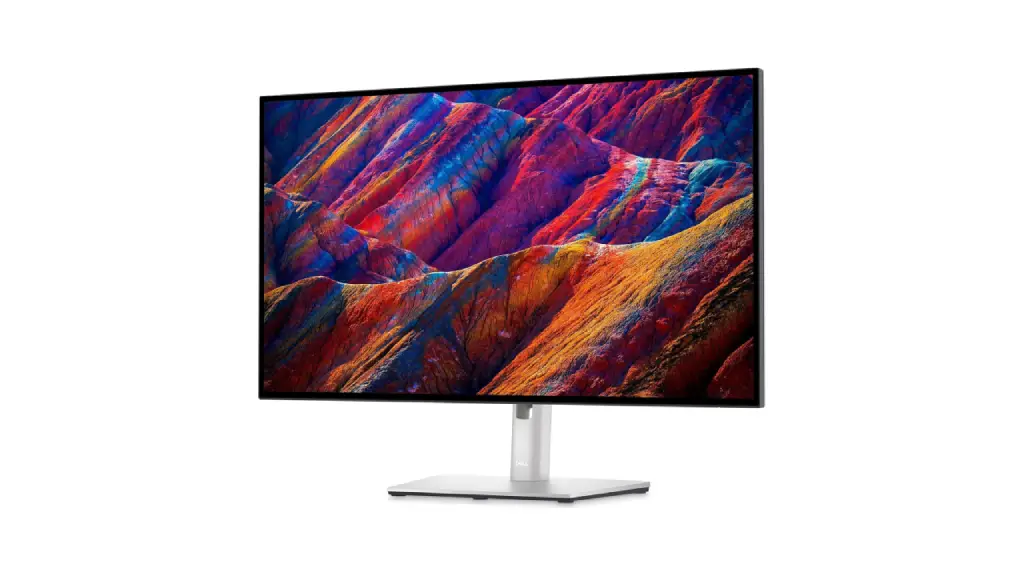
Price and Best Deals
Key Features
- 27-inch 4K UHD resolution (3840 x 2160) with an IPS Black panel for incredible detail and depth.
- 99% sRGB and 99% DCI-P3 color accuracy for precise editing.
- VESA DisplayHDR 400 for excellent brightness and contrast.
- Factory calibrated for out-of-the-box accuracy.
- USB-C connectivity with 90W power delivery, plus multiple ports for efficient multitasking.
Best For: Photographers, video editors, and graphic designers requiring top-tier resolution and color fidelity.
Need more suggestions? Visit our detailed guide: Best 2K Monitors for Gaming.
The Monitor Choice is Yours
Ultimately, the decision between curved and flat screens comes down to your priorities as a gamer or creator. Whether you want the deeper immersion and stylish modern design of a curved display, or the precision and simplicity of a flat counterpart, there’s no wrong choice.
Don’t forget to evaluate your needs, monitor size, desk setup, and, of course, your budget.
FAQs about Curved vs Flat Monitor
What is the main difference between curved and flat monitors?
The primary difference lies in their design. Curved monitors feature a slightly curved display to offer a more immersive viewing experience, while flat monitors have a traditional, straight screen.
Are curved monitors better for gaming?
Curved monitors can enhance gaming by providing a more immersive field of view, especially in larger ultrawide models. However, they may not offer significant advantages for competitive gamers who prioritize fast refresh rates and response times.
Do curved monitors cause less eye strain?
Yes, curved monitors can reduce eye strain for some users because the screen’s curvature matches the natural field of view, reducing the need for frequent refocusing.
Are flat monitors better for productivity?
Flat monitors are generally preferred for productivity tasks, especially when working with multi-monitor setups, as aligning flat screens is easier. They’re also great for precise tasks like graphic design due to less distortion.
Is a curved monitor good for photo or video editing?
While curved monitors offer immersive visuals, they may introduce slight distortion, making flat monitors more suitable for tasks requiring precise editing and color accuracy.
What size is ideal for a curved monitor?
Curved monitors are most effective in sizes 27 inches and above, as the curvature is more noticeable and beneficial at larger screen sizes.
Which is better for a small desk: curved or flat monitor?
Flat monitors are better for small desks due to their compact design and easier positioning. Curved monitors usually need more depth and space to maximize their benefits.

